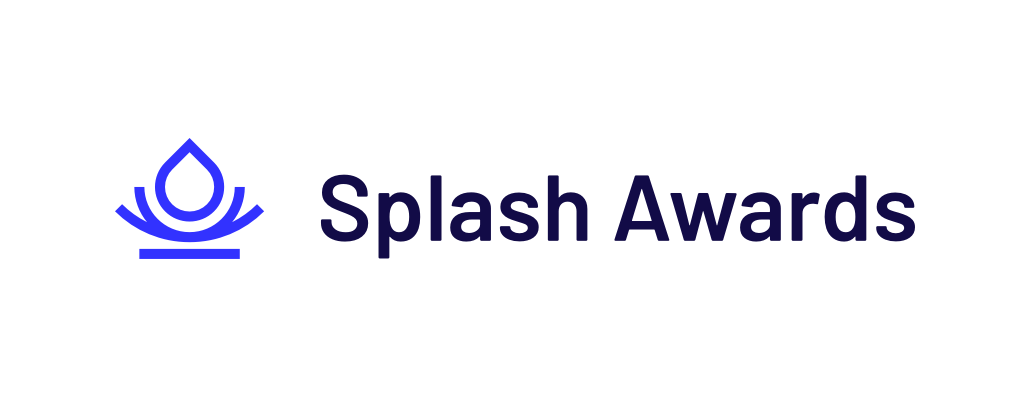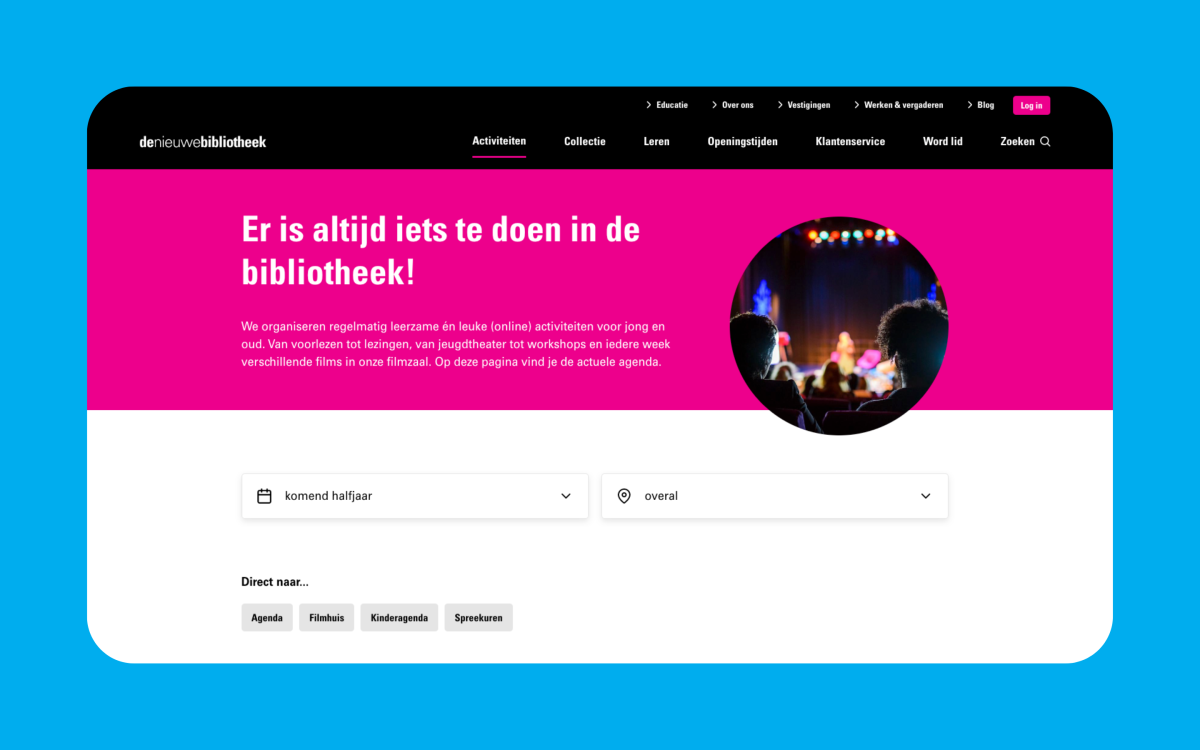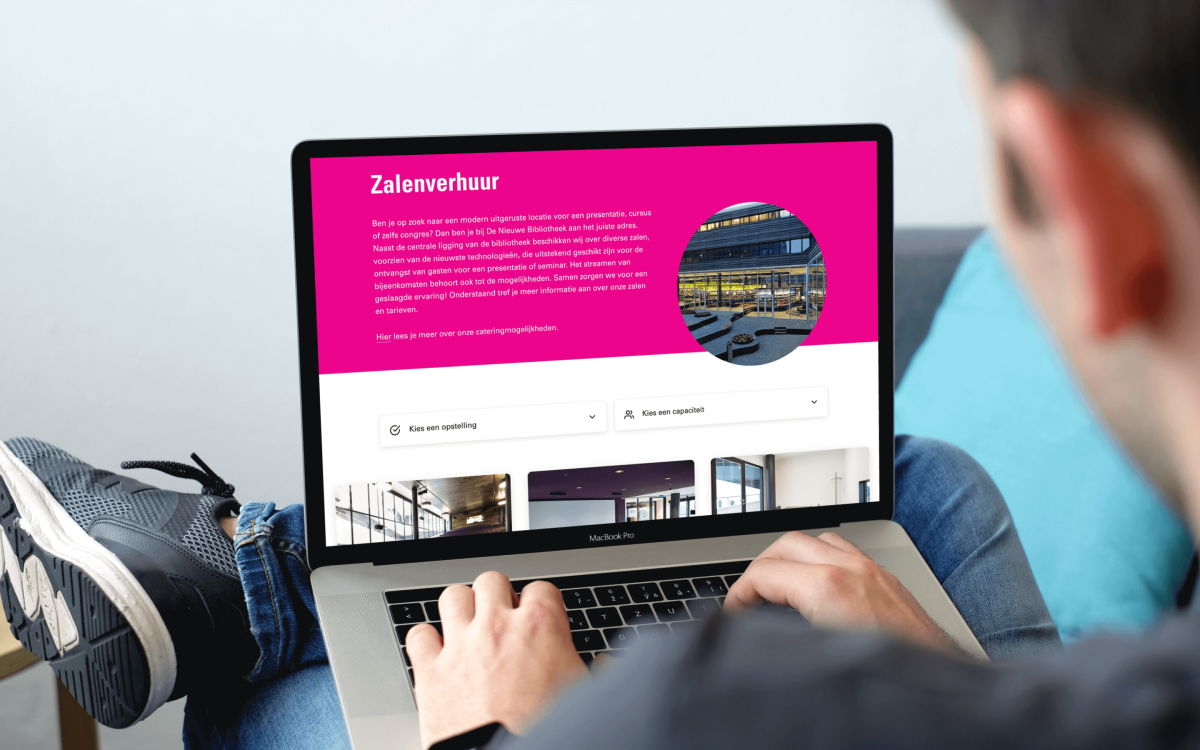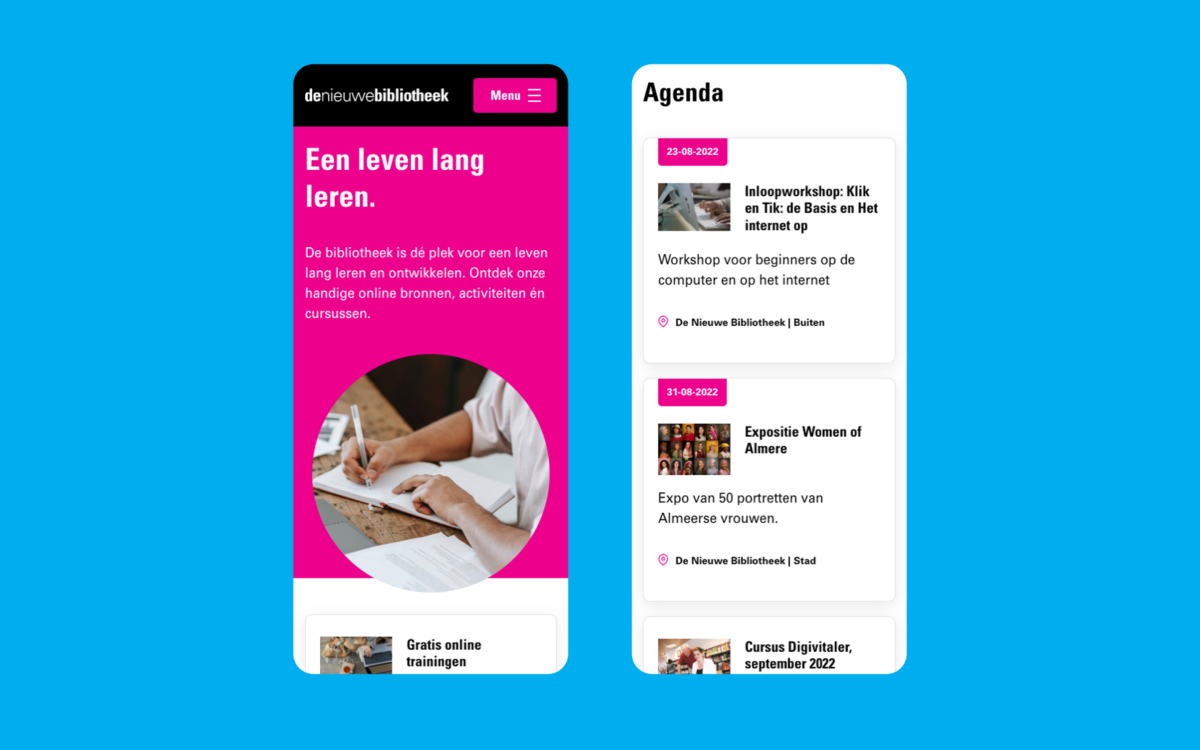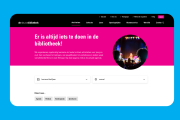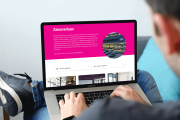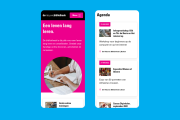Digital revolution for libraries: a new pivotal role for libraries in ‘lifelong learning’
Case description
24/7 access to everything the library has to offer, from books to activities and courses. That is the vision of the libraries participating in the Virtual Library Platform: a platform accessible to all libraries to benefit from joint and individual developments and innovations of the platform. In 2019, Library AanZet started a digital revolution in library land together with Hoppinger with the development of a scalable platform, based on state-of-the-art technology and a headless Drupal CMS, which supports 'lifelong learning' through a modern user experience.Since 2021, the Virtual Library Platform (VBP) has been made available for other libraries. By joining forces, all participating libraries have the advantage of joint development and innovations. Thanks to a grant from the province of Flevoland, De Nieuwe Bibliotheek Almere joined and celebrated the go-live of their platform on September 1, 2021. The great advantage of the platform is that the libraries can innovate collectively and fast but remain autonomous to the extent that they can still roll-out their own local initiatives and activities and have their own brand identity.
The platform of De Nieuwe Bibliotheek contains the standard functionality such as an overview of the full collection, an agenda of activities with a useful search function and information about the various locations. But there is also room for functionality specific to De Nieuwe Bibliotheek. For example, the activity summary includes integration with a SharePoint list to retrieve activities from. And you can reserve a room or workplace online via the De Nieuwe Bibliotheek platform. Also, a lot of work has been done on a tool for hybrid programming, including an integration with the ticket system. The tool facilitates the seamless combination of online and offline events and will soon be launched. The VBP platform will also be enriched with the new functionality and becomes available to other libraries that join the platform.
Case goals and results
The aim of the VBP is to change the library from a lending service to the place for personal development. The VBP brings together supply and demand of knowledge and in the future it will become a valuable community full of content created for and by local residents. The physical library often already facilitates this, but for many libraries it is still a challenge to give the right interpretation to this digitally. With the VBP we ensure a hybrid approach supporting both on- and offline. The go-live of the platform of De Nieuwe Bibliotheek is an important first step for De Nieuwe Bibliotheek in the transition to the role of social educational service provider. With the VBP, De Nieuwe Bibliotheek and other participating libraries have a future-proof and scalable technical foundation with functionality that will only get richer and richer – especially now more and more libraries join the movement. In the meantime, libraries 3 and 4 are lined up to join the VPB and the go-live of library 3 is due in a few weeks!In the first year after going live, the number of visits to the platform of De Nieuwe Bibliotheek increased by almost 27%! Also, the bounce rate – the number of visitors who only view one page per visit – has dropped by 47%. Activities have been given a prominent role on the website and that appears to pay off: more than a quarter of all visitors view the activity agenda on the platform.
Challenges
The Virtual Library Platform is an integral platform for knowledge development, based on a headless Drupal CMS. Each library has its own platform, but the technical architecture and structure of the Drupal CMS should be identical across all platforms, so that new functionalities can be implemented with relatively little effort for each participating library. For De Nieuwe Bibliotheek specifically, the challenge was mainly in the integrations with Drupal. For example, the activities are loaded from an integrated SharePoint list, which can be accessed from the frontend with a search function. Even better is that we are in the process of adding federated content so that the different platforms can make each other's online activities available in the overview.There is also an integration with Formstack for forms and with Ovatic for both booking rooms via the platform and buying tickets for hybrid events; the latter functionality will go live soon and will also include a Zoom integration. All these added functionalities are integrated as a component in Drupal. This means that a page is created in Drupal, just like the other components on the page, and the information is loaded from another system – such as SharePoint or Ovatic – into a separate building block on the page.
All platforms are technically a 100% the same. The distinction between the participating libraries is only in the content structure and styling. Based on a digital styleguide for each library, the platforms have been given their own identity and unique branding – just look at the platforms of AanZet and De Nieuwe Bibliotheek!
Community contributions
The ultimate goal of the participating libraries: all residents start their personal development at the library. By joining forces, we will eventually build a virtual library for everyone in the Netherlands to benefit from. This would mean that all libraries in the Netherlands are connected to the platform and that every library in the Netherlands is a proud Drupal user. We're not there yet, but the momentum is up with 4 libraries under way, all of which benefit from each other's investments in the platform, making it increasingly attractive for every new participant to join.The VBP is a best practice example of an application with a headless Drupal CMS in combination with many integrations for interactive functionalities, such as the room reservation system and the activity overview. Thanks to the flexible architecture, new functionalities can also be easily integrated in the future. All this without sacrificing performance thanks to the frontend in React and TypeScript.
Categories
Overheid
Date when website went live
2 years 2 months ago
© Splash Awards Nederland 2023 - Terms of use - Privacy policy
